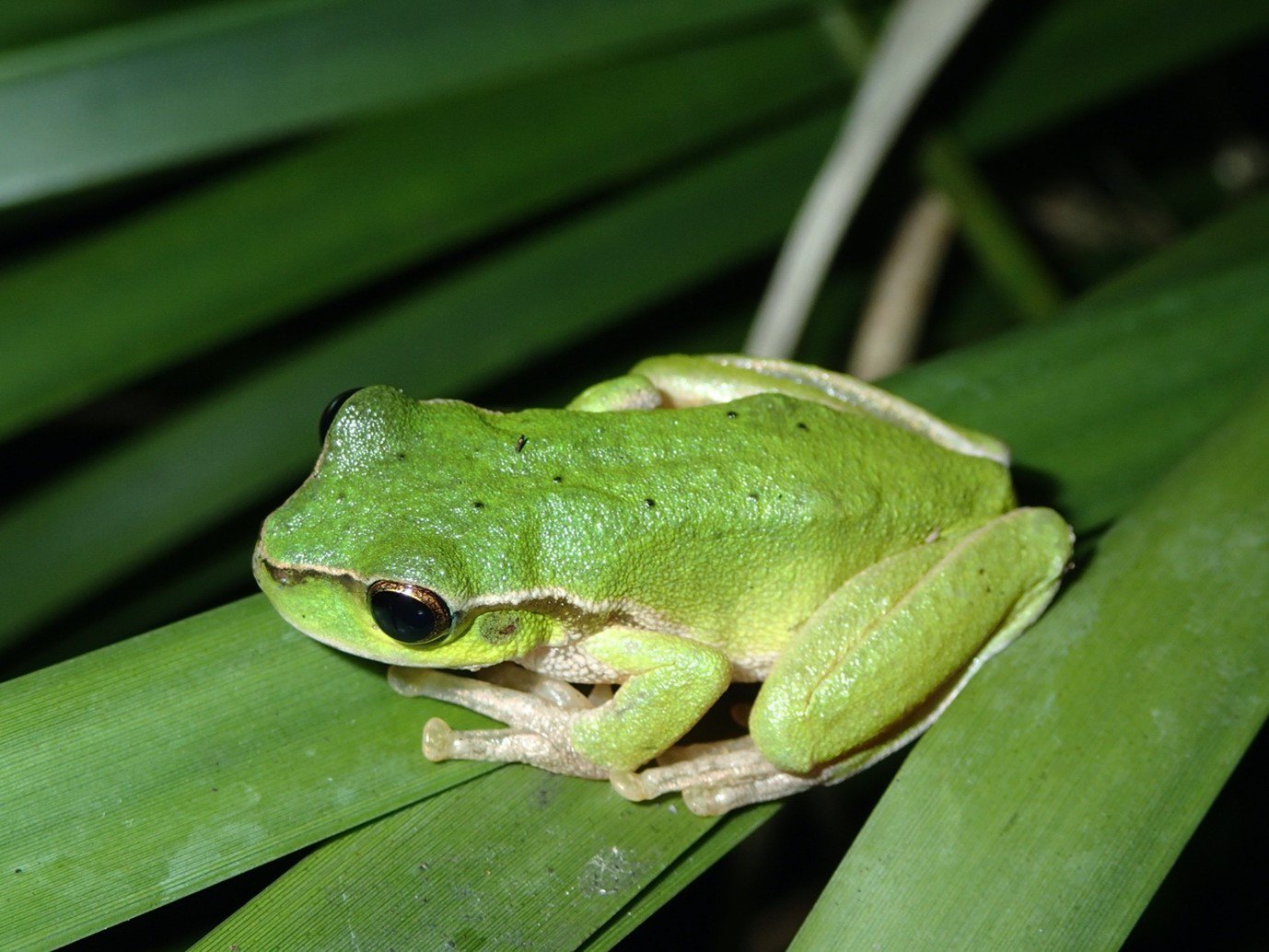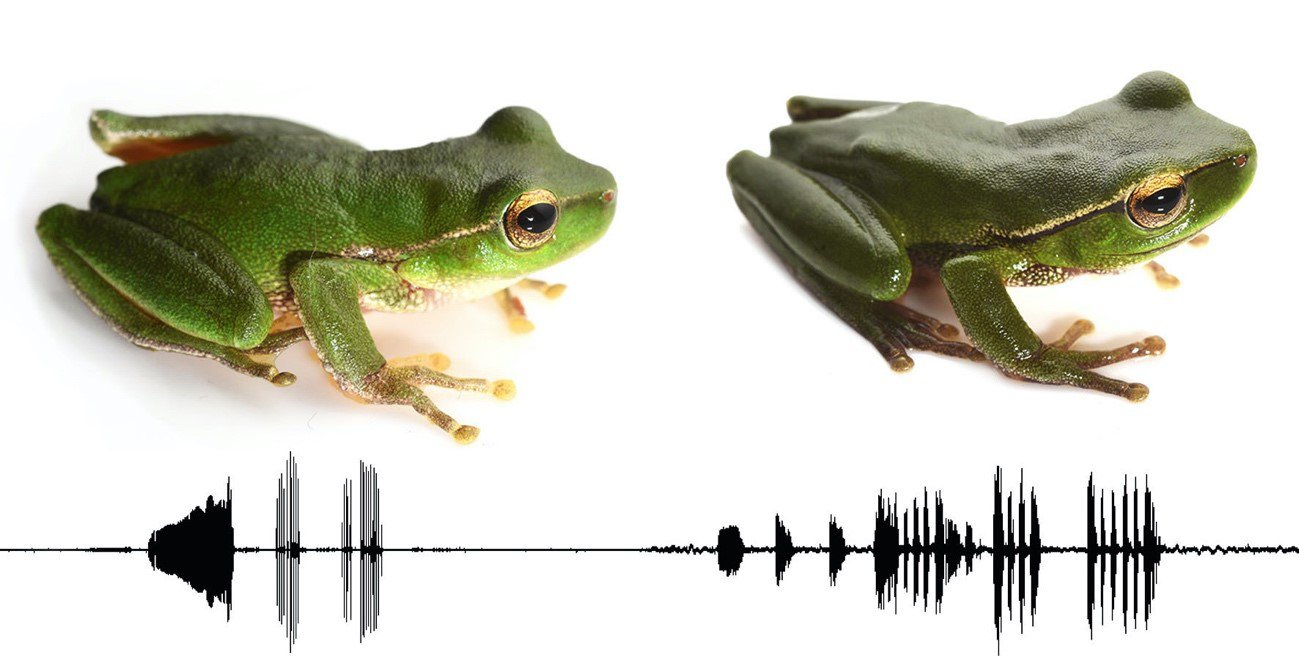Hear the difference: Citizen science deciphers the distributions of the mysterious Green Stream Frogs
How have thousands of people eavesdropping on calling frogs revolutionised our understanding of some of our most cryptic frogs? Dr Jodi Rowley and Tim Cutajar at the Australian Museum find out.

© Australian Museum.
Australia has a lot of frog species. But some of our frogs are extremely difficult to spot, and if spotted, look so similar that they are often confused. Resulting identification errors can make understanding which frogs occur where – vital in land management and conservation efforts – a huge challenge. Luckily, many frog species are easily identifiable via their calls. FrogID, an audio-based citizen science project led by the Australian Museum, may be key to really sorting out where our ‘most difficult’ frogs are. We tested just how much of an improvement citizen science audio data might be using a group of tiny green frogs from eastern Australia.
At least 246 different species of frog (plus the introduced Cane Toad) call Australia home. They range from the Javelin Frog (Litoria microbelos), about the size of a thumbtack, to the White-lipped Tree Frog (L. infrafrenata), which could almost cover your face, and from the almost black Dendy’s Toadlet (Pseudophryne dendyi) to the technicolour Crucifix Frog (Notaden bennetti). The Green Stream Frog (L. phyllochroa) is small – about 2cm long, and almost completely green with golden eyes. But so is the Southern Green Stream Frog (L. nudidigitus), the Barrington Tops Tree Frog (L. barringtonensis), Pearson’s Stream Frog (L. pearsoniana), and the Kroombit Tree Frog (L. kroombitensis). These five species, which are all related and belong to a species group called the Green Stream Frogs, can be virtually indistinguishable in appearance.

© Australian Museum
During frog surveys along the streams of eastern Australia, we come across Green Stream Frogs often. Even for us frog biologists, it can be hard to determine exactly which Green Stream Frog species we’re seeing sitting on a leaf. Not surprisingly, past misidentifications of these troublesome species have led to Green Stream Frogs being quite poorly known; no one seems to know quite where each species occurs. That’s a problem, because while some of these species are doing OK, others have declined in number and one, the Peppered Tree Frog (L. piperata), is feared extinct.
Fortunately, frogs provide a boon for those wanting to identify them by calling, even those frogs that look the same. Males call to attract females. To avoid wasted effort, they have evolved distinct calls to attract only their own species. Green Stream Frogs are no exception, so we’ve started using our ears, rather than eyes, to identify them. But we’re not the only ones; thousands of citizen scientists are now doing the same with FrogID, an app-based project that allows users to submit frog call recordings. With reliably identified FrogID records now well into the hundreds of thousands, we wanted to see how these data compared to existing records of Green Stream Frogs and use them to finally work out just where each species lives!

© Australian Museum
Call recording of the Green Stream Frog (Litoria phyllochroa)
Call recording of the Barrington Tops Tree Frog (Litoria barringtonensis)
In the first approximately three years of the FrogID project, citizen scientists gathered an incredible 2,919 records of Green Stream Frogs – that’s almost a thousand records per year! Compare this to all other records of these frogs, and the rate of record accumulation is 18 times faster. Indeed, the total number of observations of these tiny frogs, which have taken over 143 years to collect, will likely be doubled by FrogID in less than five!
The FrogID data were more accurate than other records. Almost a third of the non-FrogID records of these tricky frogs we deemed likely misidentifications – for example, records of the southernmost species, known to be restricted to Victoria and southern NSW plotting up in Queensland. After going through the data in detail, we combined FrogID data with existing data (minus the chunk of suspect records) and mapped each species’ range anew.
We discovered range extensions, and previously unknown areas where two species occurred in the same place – even the same stream! Thanks to recordings submitted to the FrogID project, we now know the Green Stream Frog (L. phyllochroa) and Southern Green Stream Frog (L. nudidigitus), once thought geographically separated, in fact share a large area just south of Sydney from Stanwell Tops to Budderoo. FrogID recordings also revealed that the northern Barrington Tops Tree Frog (L. barringtonensis) and Pearson’s Stream Tree Frog (L. pearsoniana) may also co-occur: a potential focus for future expeditions.
Our study shows just how much people can make a difference in better understanding our biodiversity. Just by recording the distinctive screeches and chirps emanating from streams across eastern Australia, hundreds of people have now given us the ability to consider these little green frogs more fully in land management and conservation decisions. While there are still gaps in our understanding of these tiny frogs (more remote places are typically less well surveyed by citizen science) we are now in a much better place to understand where our wildlife is distributed and how it is changing over time.
Timothy Cutajar, Research Assistant, Herpetology, Australian Museum Research Institute.
Dr Jodi Rowley, Curator, Amphibian and Reptile Conservation Biology, Australian Museum & UNSW Sydney. Lead Scientist, FrogID.
More information:
- Cutajar, T. P., and Rowley, J. J. L. (2022) The Utility of Acoustic Citizen Science Data in Understanding Geographic Distributions of Morphologically Conserved Species: Frogs in the Litoria phyllochroa Species Group. Journal of Herpetology 56 (3): 318–323. https://doi.org/10.1670/21-067
- Maps and spatial files produced for the Green Stream Frogs and the rest of Australia’s frogs are freely available from the Australian Frog Atlas. More information and access see: Cutajar, T. P., Portway, C. D., Gillard, G. L., and Rowley, J. J. L. (2022) Australian Frog Atlas: Species’ distribution maps informed by the FrogID Dataset. Technical Reports of the Australian Museum, Online 36: 1–48. https://doi.org/10.3853/j.1835-4211.36.2022.1789
Acknowledgements:
We would like to thank the Citizen Science Grants of the Australian Government and the Impact Grants program of IBM Australia for providing funding and resources to help build the initial FrogID App; the generous donors who have provided funding for the project including the Vonwiller Foundation; the NSW Biodiversity Conservation Trust and the Department of Planning and Environment – Water as Supporting Partners; the Museum and Art Gallery of the Northern Territory, Museums Victoria, Queensland Museum, South Australian Museum, Tasmanian Museum and Art Gallery, and Western Australian Museum as FrogID partner museums; the many Australian Museum staff and volunteers who make up the FrogID team; and, most importantly, the thousands of citizen scientists across Australia who have volunteered their time to record frogs.













